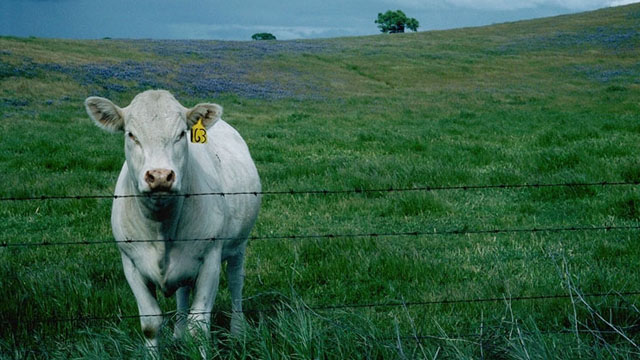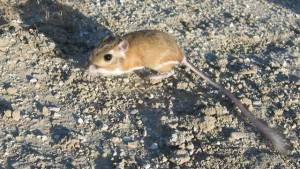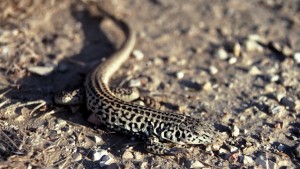
What's an ecologist to do when non-native plants have displaced native species and are disrupting an ecosystem? It has never been an easy question and won't become one any time soon. But as scientists monitor these situations over time, they learn more about what works and what doesn't. Galen Rathbun, a research associate at the California Academy of Sciences, and his colleagues at Cal State Bakersfield and the U.S. Bureau of Land Management have just published a paper in the Journal of Wildlife Management recommending a novel approach to managing arid lands in the San Joaquin Valley to benefit the remarkable diversity of endangered lizards, kangaroo rats, and squirrels who call it home. Their proposed solution has four legs and moos: cattle. Livestock grazing has a bad rap in the conservation community as a practice which has caused great damage to large swaths of western North America, which is often true. However, these scientists suggest that well-managed livestock grazing can actually benefit small vertebrates by keeping non-native grasses under control.
The San Joaquin Valley, which stretches from Kern County in southern California up to the southern end of the Sacramento Valley, has traditionally been managed as grassland, but species distribution data and historical evidence (like the writings of Spanish explorers and missionaries) suggests that before the introduction of farming, ranching and non-native grasses, the bulk of the region would have been more accurately classified as a desert. If they're right, this has major impacts on conservation strategies for the threatened and endemic animals that live there. Since European settlers arrived, the valley's landscape has shifted from a desert dotted with saltbush to dense grassland and shrubland, dominated by non-native plants, cattle ranching and agricultural crops. Populations of native small vertebrates in the area are declining and one theory is that the altered vegetation plays a big role. Blunt-nosed leopard lizards, giant kangaroo rats, and other animals adapted to desert life are thought to have trouble moving through exotic dense grasses.

During the ten-year study, the group monitored populations of key small vertebrate species on plots of land with and without managed grazing. They found grazing to have a neutral or positive effect on population size (not the negative effect expected by some), whereas the untouched control pastures saw little to no change. The idea that cattle grazing could be beneficial to the area's endemic and threatened species could really shake up future conservation strategies.
Fire has been used as a management tool in the past to keep exotic grasses under control in the valley, but many desert plants are not fire-adapted, so the practice just perpetuates a grassland landscape, killing native perennial saltbushes. Grazing, on the other hand, would manage the grasses' growth, while allowing saltbush to reestablish itself, a presence that has been shown to favor western whiptail lizards and threatened San Joaquin antelope squirrels.

Another approach used by government and land conservation organizations trying to protect a threatened native species is to buy a piece of land, and promptly remove the cattle in an effort to return it to its "natural" state. However, without cows to keep the dense exotic grasses at bay, the native species meant to be protected lack suitable habitat, and can disappear anyway.
